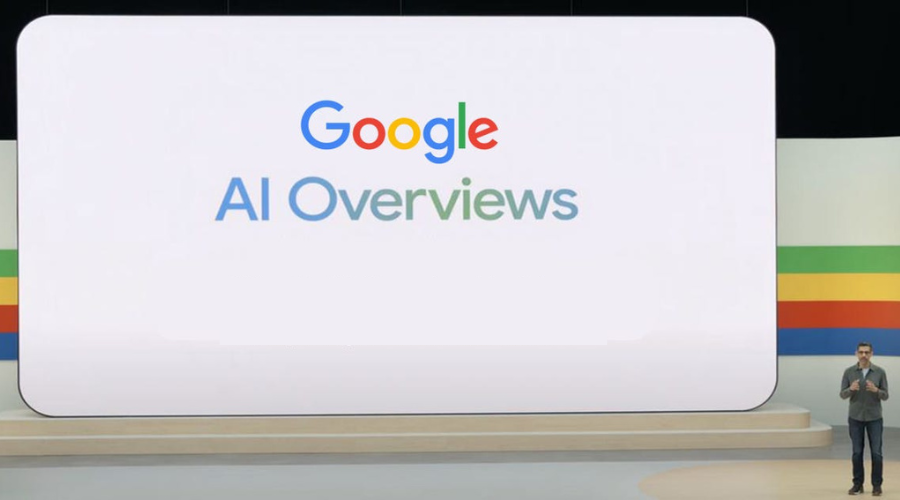
You search for “easy chicken curry” or “best beginner pasta recipe,” and instead of scrolling through blog posts, you see a shiny, AI-generated summary of the recipe right up front. That’s Google’s AI Overview, now here to help you in the kitchen.
What does that mean for you as a home cook, a food blogger, or someone managing SEO for recipes? Let’s take a closer look at how Google AI Overviews are now generating answers and how that might change your kitchen routine and web traffic alike.
The New Ingredient: AI Overviews for Recipes
Google’s AI Overviews, formerly known as SGE (Search Generative Experience), are now appearing more frequently for recipe search results, especially on desktop. These overviews utilize generative AI to summarize content from multiple sources and present it in a concise format. There is no need to click through to an actual website.
For foodies, it’s so convenient. But for food bloggers and publishers, it’s more like watching your organic traffic simmer away.
How “Recipe Intent” Triggers AI Summaries
These AI boxes appear when Google detects recipe intent keywords, like:
- “How to make chocolate brownies”
- “Quick biryani recipe”
- “Best vegan pancake recipe”
Instead of seeing the usual list of recipe cards or snippets, users now get a paragraph-long AI-generated overview, complete with ingredients, steps, and even tips, all pulled from multiple sources.
This means Google’s AI is summarizing your hard work and showing it to users without sending them to your website.
Desktop vs. Mobile: A Tale of Two Search Experiences
Right now, these AI Overviews for recipes are mainly appearing on Google desktop search. Mobile results still favor traditional recipe cards, for now.
So if your traffic is mostly mobile, you might not feel the pressure yet. But Google is testing the waters, and desktop is just the beginning. As user behavior shifts, you can expect AI Overviews to spread across devices.
That’s big news for anyone involved in SEO for recipes or running a content-driven food blog.
What This Means for Recipe Publishers & Traffic
If users can get what they want through an AI summary, why would they ever click through to your blog?
This can have a serious impact on:
- Ad revenue
- Affiliate clicks
- Brand partners
- Email signups or product sales
You may still see some traffic, especially if your content is the primary source used by the AI, but you will see less than you would had the AI not been available. Many food bloggers are already seeing reductions in page views and engagement.
It’s going to be difficult after so many years of trying to nail SEO, keyword targeting and your content style.
The Reliability Question: AI-Generated Recipes
Are AI-generated recipes even safe or reliable?
So far, AI Overviews impact has had mixed results. While they do summarize multiple sources, they can:
- Misinterpret measurements
- Mix up cooking times
- List ingredients that don’t go together
This is especially concerning for new cooks or anyone with dietary restrictions. AI doesn’t always understand context or nuance, which are crucial in recipes.
So while AI Overviews may seem convenient, they’re not foolproof, and definitely not a replacement for the thoughtful guidance of an experienced food blogger.
Adapting Your Recipe SEO Strategy for AI Overviews
So how do you continue with this new reality?
Here are a few ways you can adapt your strategy:
- Lean into authority and originality Be sure that your recipe, in one way or another, shares something unique. Your personal twists, cultural context, or creative ideas that AI cannot duplicate.
- Optimize for structured data and featured snippets Use schema markup so Google can see your content. There is a chance you could be featured as a source in the AI overview.
- Utilize video or other multimedia AI cannot summarize video or voice. When you embed brief cooking videos, you’ll increase engagement and keep users on your site longer.
- Build your brand outside of Google Start building your community on Pinterest, Instagram, or with newsletters. With Google changing up its search systems, these other platforms are likely unaffected.
- Consider diversifying topics Try exploring kitchen tips, nutrition, or cooking science, which tend to be less presented in AI overviews.
Understanding the Evolving Search Landscape
Google’s reformed search is bigger than just recipes. It’s part of a broader trend of AI-driven answers across health, education, shopping, and beyond. The result is that users may spend more added time on Google.
This is a convenience for users. This is alarming for content creators: even if you have good rankings, search traffic is no longer guaranteed.
This means it is more important than ever to understand not only keywords and backlinks but also how AI interacts with your content.
If you’re interested in exploring the future of search, AI, and data, learning about AI tools and data science could be your next step. And if you’re serious about it, the best data science college in Coimbatore can help you build the right foundation.
Conclusion
Google AI Overviews are changing the game for recipe searches. For users, it might feel like having a chatbot sous-chef. For content creators, it’s a mix of excitement and anxiety.
While AI-generated summaries offer quick answers, they also raise questions about accuracy, credit, and visibility. But with the right strategies like personalization, structured data, community-building, content creators can still stand out.